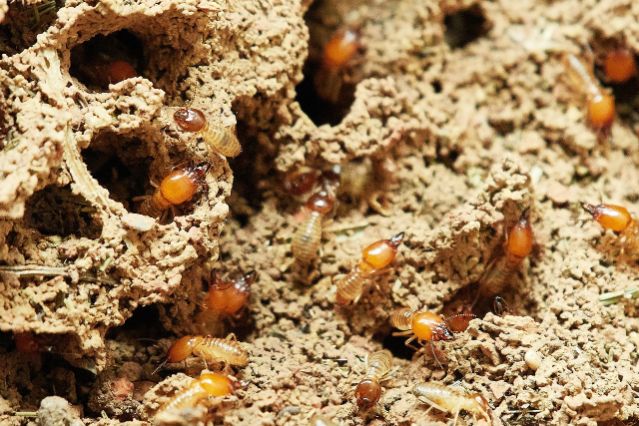Termites are every homeowner’s worst nightmare. The thought of having to tear down your house, deck or building because of termite damage and infestation is enough to make anyone shudder. Building a new deck is no small feat either – it is an investment of time and money into your lifestyle and property value. The decking material you choose, therefore, is critical. You may not realise it, but the building materials will have a big influence on the longevity of your deck.
In fact, the choice between wood decking and composite is far more than an aesthetic issue or the comparative price of composite decking, but one that has many repercussions – especially when it comes to the threat of termites and pest damage.
We have been working in the building industry for over 20 years, providing homes with termite resistant composite decking boards, so we know exactly how crucial this feature is for your deck. So, if you’re looking for the best decking material for termite protection, here is everything you need to know.
Common pests that threaten home decking materials

From harsh weather to creepy crawlies – Australian decks have a lot to face in our great outdoors. When it comes to pests, however, the main ones that threaten your deck, porch or patio include:
- Termites (aka white ants)
- Carpenter bees
- Borers (including marine borers)
- Powder post Beetles
- Wood wasps
Do termites eat composite decking?
No, termites do not eat composite decking because it is a man-made material. Although it looks deceptively like wood, composite decking is made from recycled materials like plastic and wood fibres that are combined with a bonding agent. The resulting decking boards are completely inedible to pests.
Termites usually feed on soft or rotting wood and gravitate towards moist areas. Wood rot is most commonly caused by excessive moisture. Composite decking like our Titanium Range, however, features a non-porous composite core which, in addition to minimising stains, eliminates the conditions that termites gravitate towards. No wood, no moisture, no termites.
Are other pests a threat to decks built with composite materials?
Composite decking is entirely inedible to pests and rodents. Unlike wood, which is susceptible to common pests like termites, wood wasps, borers and rats, composite decking’s polypropylene-based material is not appealing to them and is thus, completely pest and termite resistant.
In fact, the only common problem people have when caring for composite decking is issues with mould and mildew, which affects timber products equally. In fact, timber is then additionally susceptible to brown, white and soft rot fungi that can thoroughly destroy its internal structure.
What makes composite decks so pest proof compared to wood?
The key to composite decking’s pest resistance is in its manufacturing process. To make composite decking, the manufacturer will mix together a combination of recycled materials (such as plastics and wood fibres) with a bonding agent to make the deck boards. As a man-made product, the resulting decking board is unappetising and inedible to insects and pests.
Not only does this make the material pest proof, but it comes with a range of other benefits. Here are some advantages and disadvantages you should consider when comparing timber with composite:
Composite decks
- Termites don’t eat plastic
- Easy installation
- Low maintenance
- Wide range of colours to match any style
- Versatile and can be used in a variety of outdoor uses, including patios, backyard decks and entertaining spaces.
- Sometimes comes with higher purchase prices, but has quicker installation with lower labour and ongoing maintenance cost
- Eco-friendly and made of recycled materials
Lumber decks
- Termites and other pests eat and live in wood
- Often costs less to install in terms of materials, but more in time and ongoing maintenance
- Contributes to negative environmental impacts (e.g., deforestation)
- Is a fire hazard in comparison to the less combustible composite material
While a natural timber deck may initially appear to suit a certain look or high-end style for your project, we recommend browsing our range and testing a free sample. Homeowners are often surprised by how wood-like in appearance composite decking is, and how much it looks like the real thing. With the added benefits of being low maintenance and pest-free, it’s easy to see how quickly these decking boards have grown in popularity.
Who should be contacted if termites are found in the composite decking?
Composite decking is 100% pest resistant, and termites cannot live in or eat the product. If you think you’ve found termites in your decking boards then it is more likely that it wasn’t composite material that was used to build your deck, or you’ve found them in transit from another part of your house.
If you are looking to install a termite and pest free deck in your backyard, contact our Brite Decking team for the best composite decking materials on the market.



